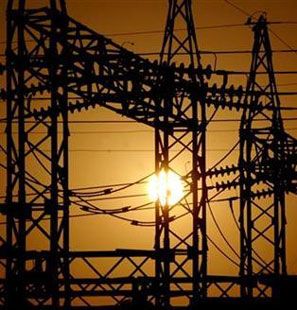Committee set up by state govt considering reduction in rates
A day after the Aam Aadmi Party (AAP) government in Delhi reduced electricity charges by 50 per cent for those consuming up to 400 units a month, the Congress-led government in Maharashtra, too, is considering a cut in power rates. Maharashtra Chief Minister Prithviraj Chavan on Wednesday said the state was mulling a rate reduction but not because the AAP government had done so in Delhi. He said a committee headed by the state industry minister Narayan Rane was looking into the issue.
Maharashtra Chief Minister Prithviraj Chavan on Wednesday said the state was mulling a rate reduction but not because the AAP government had done so in Delhi. He said a committee headed by the state industry minister Narayan Rane was looking into the issue.
Chavan was responding to a letter from Sanjay Nirupam, a Congress member of Parliament from North Mumbai, asking the government to go the AAP way ahead of the Lok Sabha elections. Nirupam has demanded a reduction in rates for those consuming less than 500 units a month in Mumbai. He also demanded an enquiry on the cost structure and pricing mechanism adopted by the city’s power distribution firms.
The major private power distributors in Mumbai are Reliance Infrastructure (consumer base of 2.8 million) and Tata Power (0.43 million). In addition, BrihanMumbai Electric Supply & Transport (BEST), part of the BrihanMumbai Corporation, and the state-run Maharashtra State Electricity Distribution Company, or MahaVitaran, also distribute power in certain areas.
Former Central Electricity Regulatory Commission chairman, Pramod Deo, told Business Standard: “If the Maharashtra government wants a uniform rate in Mumbai or decides to subsidise certain categories, the respective distribution players will have to be paid the difference upfront. Under the Electricity Act, 2003, the state government might decide to subsidise any category of consumers by paying the difference between the rate determined by the state regulator and the one the government desires. It is immaterial whether the distribution company is wholly owned by the government or is a private one.”
Maharashtra Power Secretary Ajoy Mehta said any decision on the power rate in Mumbai should not impact 24x7 power supply in the city and its status as the financial capital of India.
Ashok Pendse, consumer representative at Maharashtra Electricity Regulatory Commission (MERC), said there was a need for cross-subsidy to reduce tariff of residential consumers. "The cross-subsidy can be given either by the state government or industry (by paying more). If the government is not prepared to do so, the question is whether we can raise tariff of industry," he added.
Former MERC chairman V P Raja said it was up to the state government. “Section 65 of the Electricity Act has a provision that gives the government the power to subsidise any category of consumers. The state government is providing an annual subsidy of about Rs 3,000 crore to agricultural pumpsets and Rs 500 crore to power looms in Maharashtra," he added.
According to Deo, there was a difference between the Delhi and Mumbai distribution systems. "The three discoms in Delhi are private ones inasmuch as private firms hold 51 per cent equity in each of these and the state government owns 49 per cent. A small area falling under the New Delhi Municipal Corporation is owned by the local body.
Rate reduction applies to three private distribution firms. In Mumbai, the area up to Mahim creek gets electricity from BEST. Very few large consumers in BEST's supply area get power from Tata Electric Company.
In the suburbs, a large number of consumers get power from Reliance and a small number of them from TEC; some pockets like Mulund get supply from MahaVitaran. Rates for the same category of consumers vary as each supplier sources power from multiple stations or traders and the consumer mix in their areas of supply is not uniform."











 © 2025
© 2025